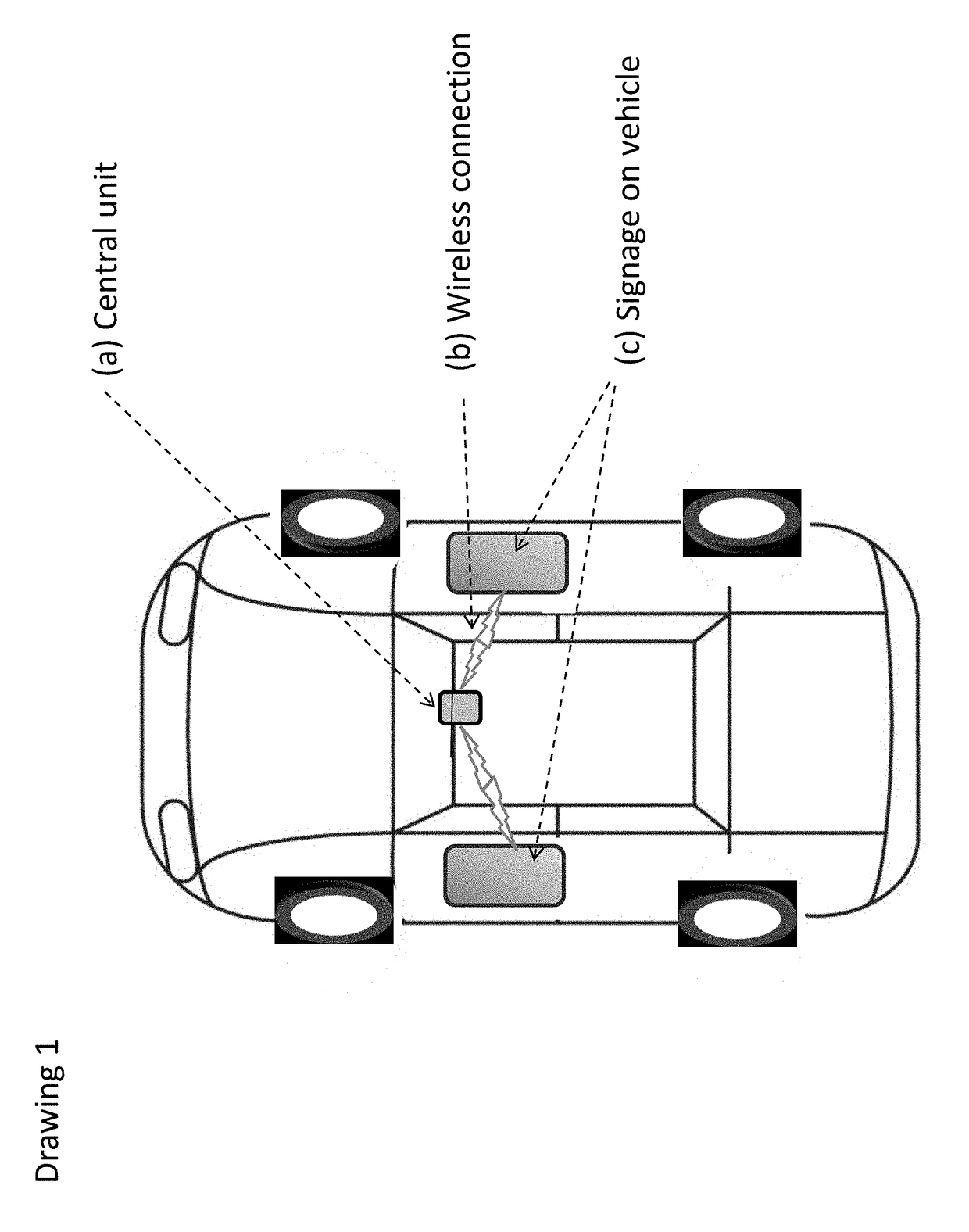Compensation based removable Mobile Advertising
a mobile advertising and compensation technology, applied in the field of mobile visual advertising, can solve the problems of limited coverage, limited method application, cost of purpose-built banner vehicles displaying signage, etc., and achieve the effect of rapid engagement of large audiences
- Summary
- Abstract
- Description
- Claims
- Application Information
AI Technical Summary
Benefits of technology
Problems solved by technology
Method used
Image
Examples
Embodiment Construction
[0016]Drawing (1) depicts the basic components of the core system. The system has signage (item c). The advertisement is printed or depicted on this signage. There is a central unit (item a) which tracks vehicle movement, time, and other information. Information collected is used for billing and invoicing purposes. The central unit is linked wirelessly (item b) to the signage to verify signage is deployed.
[0017]The signage (item c) can be made of plastic, magnet, metal, or any other material. The signage advertising can be via printing, laminating, painting, embossing, or any other medium. The signage is affixed to the vehicle in a non-permanent method; embodiments can include straps, adhesive, magnetic, or other mounting methods. The signage can be deployed or affixed by the vehicle owner, removed by the vehicle owner, and re-deployed or re-affixed by the vehicle owner. An exemplary embodiment would be a magnetic based sign for easy adhesion and removal, with a printed surface cont...
PUM
 Login to View More
Login to View More Abstract
Description
Claims
Application Information
 Login to View More
Login to View More - R&D
- Intellectual Property
- Life Sciences
- Materials
- Tech Scout
- Unparalleled Data Quality
- Higher Quality Content
- 60% Fewer Hallucinations
Browse by: Latest US Patents, China's latest patents, Technical Efficacy Thesaurus, Application Domain, Technology Topic, Popular Technical Reports.
© 2025 PatSnap. All rights reserved.Legal|Privacy policy|Modern Slavery Act Transparency Statement|Sitemap|About US| Contact US: help@patsnap.com


